Oscar Viñals has submitted its latest futuristic space rocket, this time it’s called Leto Titan Cosmos project. The name was based on one of twelve Titans of the Greek mythology as indirect reference to Apollo and Artermis’ NASA space programs.
You can read Oscar Viñals’ detail explanations about this ambitious space exploration project below.
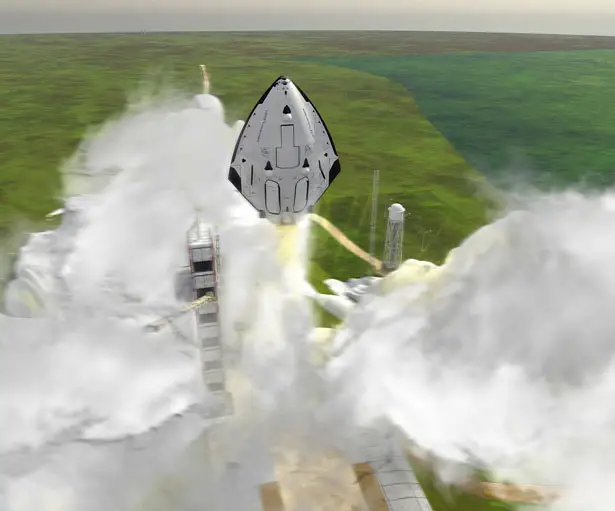
The LETO TITAN COSMOS concept project born as a “future option” to explore and take advance of new sources, to obtain valuable materials out of Earth and interesting for our future society and develop. It gets its name from one of the twelve Titans of the Greek mythology, the goddess Leto, that was Apollo and Artemis’ mother; also, is an indirect reference about of Apollo & Artemis’ NASA space programs, because share future and past space concepts/ideas from those space programs.
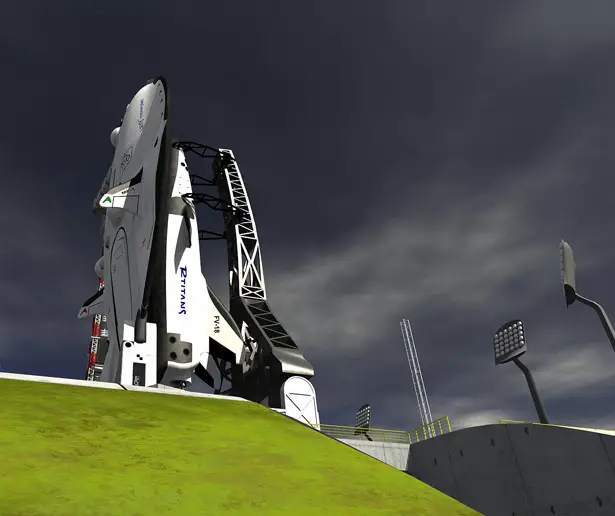
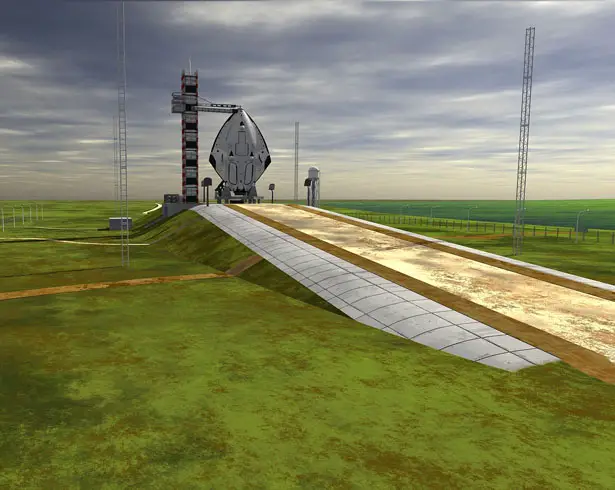
One of the best aspects of this space project would be, that all its parts (boosters, fuel tanks) could be 100% reusable and when the main spaceship (LETO TC) could travel for example to the Moon, any space junk/trash (module, fuel tank, space device, etc.) could be leave over the surface in any case. This project has been designed and developed to reduce the costs, to increase the future space missions and obtain more “profits” in science knowledge and economics aspects.
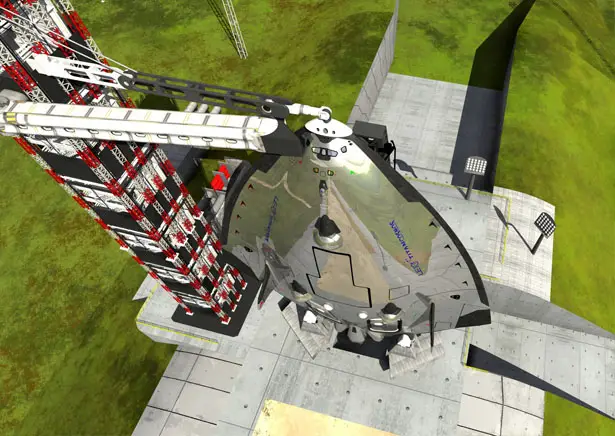
The spaceship could be composed by a booster (auxiliary rocket), called the 12 TITANS, capable to assist the main spacecraft, the LETO TITAN COSMOS, in the process to lift off from the launch pad to reach the maximum altitude and get it out the space (leave the Earth).
The 12 TITANS, could be a reusable rocket, equipped by two powerest & oversize rocket engines based on SpaceX’s raptor rocket engines. Propelled by a mix between of cryogenic liquid methane(CH4) and liquid oxygen (LOX),could produce a thrust about of 10,600 kN (2,374,400 lbf total at sea-level) with its two engines in a cycle of Full-flow staged combustion.
Built on ultra-lightweight and strong materials, like titanium, carbon fiber or graphene in order to resist high temperatures and a hard conditions or high structural stress. The rocket could return to the base on the ground in an unmanned mode (like a big drone –X·37b-), and landing in a runway with a glide flight, thanks to be equipped with a satellite guidance system and its avionic system.
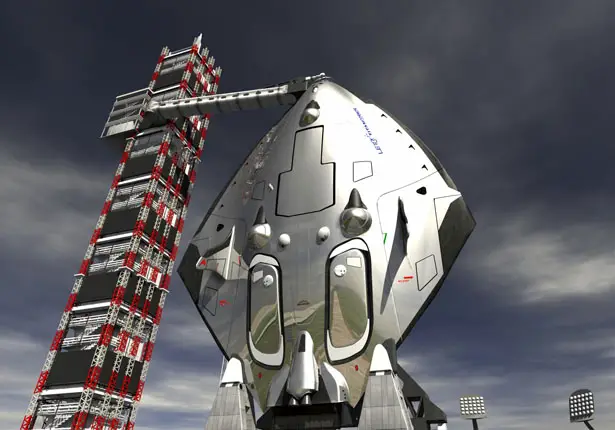
The 12 TITANS would be part of the second stage, with a burn time about of 190 sec., because on the first stage, after 130 sec. of burn time the fuel tanks from the main spaceship (the LETO TITAN COSMOS) would be ejected. So, The 12 TITANS could reach an altitude up to 120 km.

The main spacecraft, The LETO TITAN COSMOS, would be a new concept of space shuttle, much more efficient in terms of carry up payloads to put in orbit, to transport to the ISS, to the Moon and beyond. Thanks to new materials, new technologies and new aerospace techniques of construction of this 21th century, the possibility to built this new generation of spaceships, in this case, a mix between a shuttle and a spacecraft explorer could be possible. The crew could be composed up to 5 astronauts.
The LETO TITAN COSMOS could be equipped for a variety of new generation of space engines, a linear aerospike engine, an aerospike annular engines (redirected thrust) and a VASIMR engine. The main engine (linear aerospike) could burn at the same time that the 12 TITANS’s rocket engines from the launch pad.
The linear aerospike engine was originally designed to power the long since cancelled X-33 Venture Star. The rocket engine that can hypothetically maintain a fairly uniform efficiency, regardless of atmosphere, when the aerospike engine fires, the expanding gases are directed down the sides of the spike, rather than at random. In an atmospheric environment, surface tension and air pressure act like the other side of the bell, and hold the flames close to the spike, much like the way that water can be held against the underside of a surface as it rolls down. As the aerospike engine climbs to higher and higher altitudes and experiences thinner air pressures, the plume forms a more familiar vertical column, like the one we’re used to seeing in our normal rocket engines. Even in a vacuum environment, the engine holds its efficient well: should the gasses push in random directions without air pressure to form them, they’ll still inevitably have to react with the sides of the spike, “squeezing” it upwards. Currently, this kind of rocket engines aren’t than efficient as a bell rocket engines at sea level, but in the LETO TC concept, located in the base of the nozzle ramps (heat exchanger), it have a central thrust cells that works only at sea level (liftoff stage) in order to increase the lateral expanding gases speed, increasing the pressure of the turbine exhaust recirculation zone, with the result of more thrust at sea level.
The aerospike annular engines (redirected thrust) could be used to landing & liftoff over the Moon, Mars or other space mission. The LETO TITAN COSMOS, could have 3 of those and could redirect its thrust –vectoring-, located on the top of its fuselage, because when the spaceship needs to land, turn over 180oitself (face down) and the top side becomes the bottom side. These engines work as the linear model/type, but the thrust cells are in a circular shape and could redirect its thrust, combining and tuning the actuation of its thrust cells.

The VASIMR engines.
How it works? VASIMR is a heats plasma — an electrically charged gas (inert propellant) — to extreme temperatures using radio waves, strong magnetic fields then funnel this plasma out the back of the engine, creating thrust. These generate thrust by accelerating ions – charged atoms or molecules – using electricity, the electricity needed could be generated in different ways, but for sending humans to Mars, we should wants to use a nuclear reactor (Fusion).
The LETO TITAN COSMOS, could use this kind of engine (low fuel consumption) combined with aerospike engine (first momentum) to travel to the Moon, Mars, etc. In the vacuum, those combined engines would have a high performance with a low amount of fuel and could carry up, many different payloads between Earth and the Moon and beyond.
Mining the Moon, could be a possibility for the LETO TITAN COSMOS and could bring back to Earth a maximum of 17,000 kg of payload, in its cargo bay of 122.12m3. Also, could put in orbit payloads with a maximum of 30,000 kg of weight (from Earth).
Inside the cargo bay, the LETO TITAN COSMOS could have a lift/elevatorfor the astronauts in order to get access to the Moon surface or in other surface missions, and also to return to the spaceship, after “surface space walks”. The distance to run between the spaceship and the surface by the elevator would be approximately 5,8 m.
Equipped with a special landing system, based on 3D LiDAR system (Laser Imaging Detection and Ranging), multispectral image, AESA radar(Active Electronically Scanned Array), etc. in order to get a success landing, in any place.
Among many future innovations, the LETO TITAN COSMOS could have a 3D printed inside fuselage made on carbon fiber and titanium, very lightweight and strong. The thermal shield of this spaceship would be composed by semi-rigid (main body –top side- “white color parts”) and hard materials(bottom side, rear diffusers and front side –astronaut’s cabin-).
- The semi-rigid materials, would be composed for a “sandwiching structure” in some specific layers, made on carbon/epoxy, flame-resistant meta-aramid Nomex, Kevlar, composite materials and aluminum membrane. These materials, could reduce drastically the overall spaceship weight.
- The hard materials would be composed for superheated carbon-carbon composite sandwiching a lightweight carbon foam core and ceramic material. Built in sections with specific patterns and replaceable. Its main function would be, resist the high temperatures on the Earth reentry and Mars reentry, above 3,000oK (2,700oC) on the bottom side and the rear diffusers (in the atmosphere of Mars, due to a less density, the re-entry temperature would be minor).
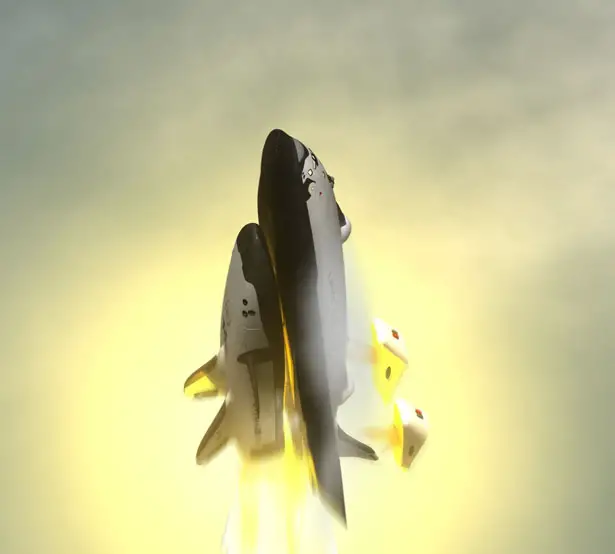
More details about the LETO TITAN COSMOS would be:
- Equipped with three support legs, that could be deployed when the spacecraft get landing over the Moon surface or Mars.
- Equipped with a crew commander sphere structure, that could rotate in the maneuver of approaching to land, wherever it wants, in order that the astronauts would have a direct vision out the spaceship of the surface.
- Equipped with fuel tanks of Oxygen (LOX), Hydrogen and argon/xenon gas (VASIMR engine).
- Equipped with a Crew quarters with 5 sleeping cubicles, toilet, medical & laboratory module, food storage, control panels, etc. in 98.5 m3.
- Equipped with a module for the space suits/spacewalks, where the astronauts would put the suits and after stabilize the pressure with the outer space, they could run out. Also, this module would be the section that would be docked to the space station or other spaceships.
- Equipped with a laser communication system, located on the top of the spaceship and with two “umbrella” antennas, located under the spaceship, that could be used when it would be landed over the Moon, Mars or another celestial body in order to establish communication with the control base (Earth).
- The own spaceship would be capable to act as a shield against, cosmic rays, space radiation, Sun rays, micro meteorites, etc. thanks to its thermal shield that inside it could have a layers of material capable to do it. All of this, because when the spaceship is landed (face down), the bottom side, is the exposed side and all things below it are “safe” against many kind of “space threats”.
- The LETO TITAN COSMOS, could have an emergency crew capsule escape system, based on an ejectable capsule riding atop the spaceship (front), that could fire two powerful thrusters to push the space crew to a safe distance, just in case of a failure launch from the launch pad or in a failure reentry. Then a parachutes would be fired and the “head” of the LETO TITAN COSMOS could land in a secure place, safe.
- All materials of LETO TITAN COSMOS space explorer concept, would be reusable and when the main spaceship would explore or make missions, nothing would be remained left over the explored surfaces.
- Thanks to its aerodynamic shape and to big rear diffusers, could reduce its re-entry speed and control the descent to a runway. Two big ailerons under the fuselage, located on the intake diffuser side, could control the air flow at high speed in order to stabilize the glide flight.
- Also, due to its aerodynamic shapes this spaceship concept could have an amazing skill, the possibility to fly face down and land on a ground base control (Earth/Mars) as a SpaceX’s rocket, in a vertical maneuver. After test the spaceship model with computational fluids dynamic software (CFD), this could fly over 6,000 meters of altitude and with a specific atmospheric conditions (Earth), face down, controlling the descent with its 3 aerospike annular engines, located on the top of the fuselage until get landing. So, it could have to ways two land after a space mission, in a runway (most easy & safe way) or in a vertical maneuver.
The involvement of private industry in the space sector is nothing new. World over, more and more work of space agencies is being done in collaboration with private companies. There are literally hundreds of private entities building commercial satellites for their clients and future space concepts projects. The LETO TITAN COSMOS, could be a space project affordable for private industry.
This space concept, could travel to Mars joined to a “mothership” capable to travel in less than two months (39 days), according the concept of theAd Astra’s president and chief executive, Franklin Chang Diaz, who is a former Nasa astronaut and works developing the future VASIMR engine. Mr Chang Diaz tells the BBC. “For a spacecraft that would weigh 400-600 metric tonnes, with a power level of 200 MW (megawatts), you can get to Mars in 39 days.”
Also, thanks to a rotational system that the “mothership” could have, and where the LETO TITAN COSMOS could be docked, the rotational movement could produce a micro gravity (0,8G) during the journey to Mars.
Periods spent in space by astronauts, and the associated consequences for the body in terms of loss of muscle mass and bone density, as well as accelerated wear and tear on the circulatory system, are problems that a micro gravity could minimize. In terms of potential host planets, Mars is the closest contender.
The challenges of space exploration are great and we can learn so much from mastering them. The LETO TITAN COSMOS space concept is committed to playing its part in this unique and historic adventure.
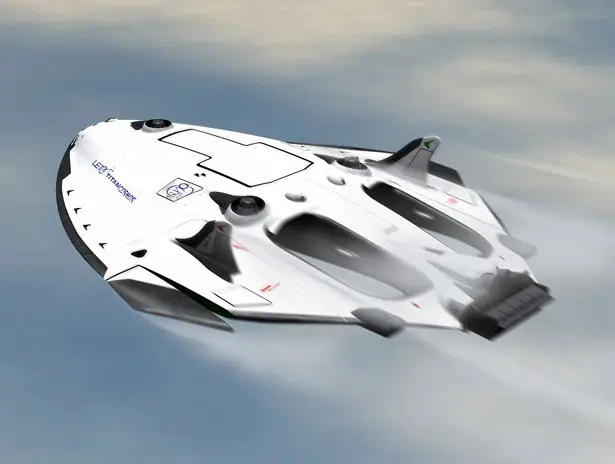
More images of Leto Titan Cosmos Space Project:
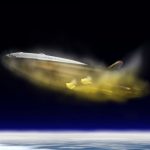

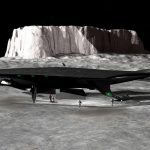




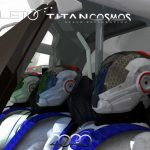
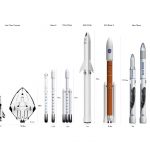
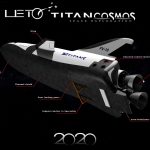
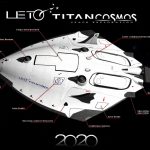
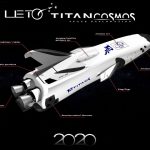
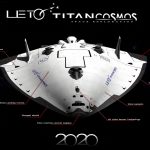
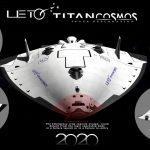
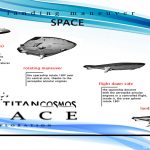
Project by: Oscar Viñals
Tuvie has received “Leto Titan Cosmos Space Project” from our ‘Submit A Design‘ feature, where we welcome our readers to submit their design/concept for publication.








Mass produce this, build this, OK Space X.
Cargo & manned & drone models
Classic.